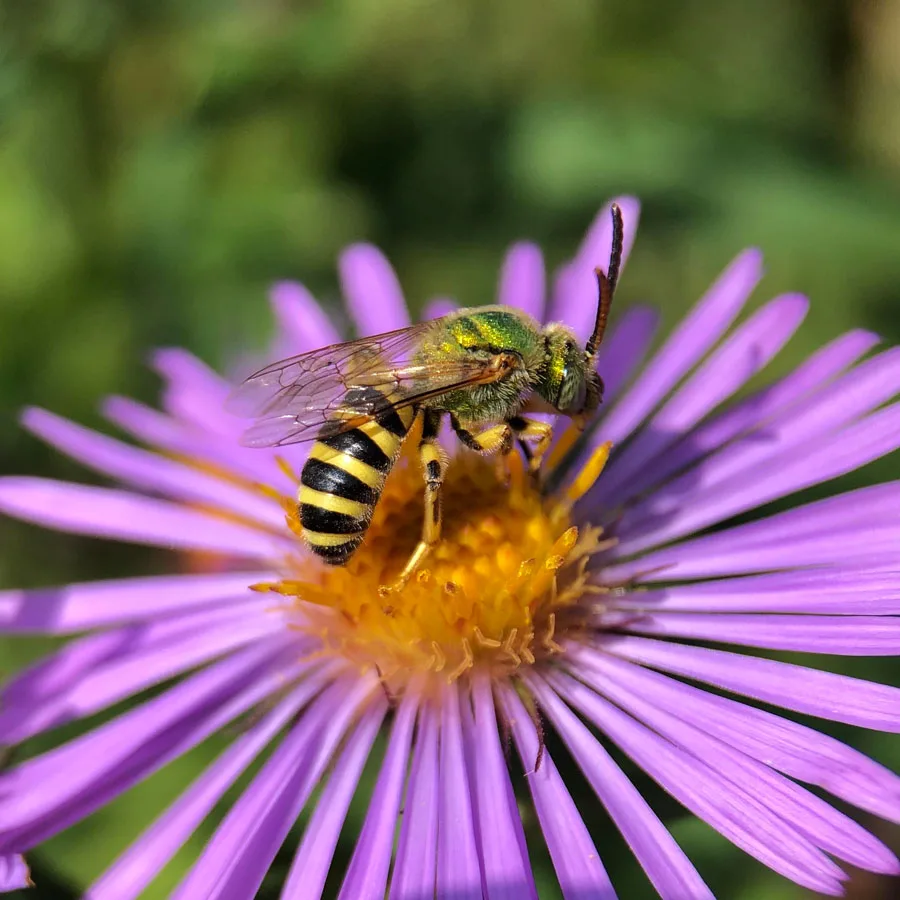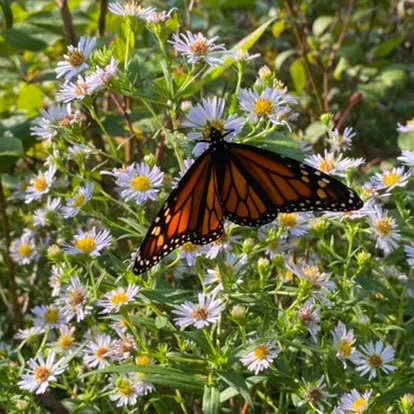WELLINGTON COUNTY – Monarch caterpillars eat only one thing: milkweed. Without the plant, the caterpillars cannot survive, and monarch butterfly populations plummet.
That makes milkweed a keystone species – a plant that’s essential to shaping the ecosystem; a plant that’s absence can trigger environmental collapse.
Keystone plants provide food for specialist caterpillars and bees – species whose survival is dependent on particular plants.
In addition to milkweed, keystone perennials here in Ecoregion 8 include goldenrod, asters, and sunflowers.
Blueberries and willows are keystone shrubs.
North American oak, white oak, plum, and birch are keystone trees.
As the number of keystone plants in a region decreases, so does the number of specialist bees and butterflies essential for pollinating food and flowers.
People have been making an increased effort to include keystone species in their gardens for these reasons.
Keystone plants are all native species, meaning they “evolved in our region and are adapted to our climate,” said certified pollinator steward Lisa Massie.
“When we don’t have [keystone plants] in the ecosystem, that’s when things start to fall apart.”

A sweat bee, which is attracted to persperation, lands on an aster flower. Asters are one of the most essential plants for pollinators in Wellington County. Photos by Lisa Massie
Food for specialist caterpillars and bees
“A North American oak in its native range will host over 500 species of caterpillars, whereas an Asian ginkgo tree might host only five species,” Massie said, referring to data from the National Wildlife Federation.
“Plum trees host over 340 different caterpillars, and birch trees host over 248.”
Goldenrod is a keystone perennial that hosts more than 100 caterpillar species and is the primary food source for 42 different species of bees.
And native asters host 100 caterpillar species and 33 types of bees.
Native sunflowers host 66 caterpillar species and 56 types of bees, Massie said.

A monarch butterfly perched on an aster; asters also provide food for specialty caterpillars.Photos by Lisa Massie
Growing keystone plant species
Keystone plants are easy to grow in gardens as they thrive with minimal maintenance and irrigation, Massie said.
They can be planted from seed in fall, as the winter freeze helps the seeds germinate. “Use mother nature to assist in the process,” she advises.
Gardeners can also choose keystone plants instead of growing them from seed. It’s best to plant most keystones in spring or fall, Massie said, though summertime planting is okay too – “just water, water, water – everyday for the first two weeks.”
Keystone seeds and plants are available in many native plant nurseries including Bee Sweet Nature in Puslinch.
Massie said finding native seeds and plants is “much easier now than it was five to 10 years ago,” with native species becoming available in larger nurseries and even some grocery stores.
“I bought a whole bunch of asters at my local Zehrs,” she said – “something you never would have dreamt of five years ago.
“You would have been driving all over Ontario to find a native nursery.”
Since completing the online certification course with Pollinator Partnership Canada, Massie has presented to gardening groups about native plants and pollinators.
During these talks she always reminds people that it’s okay for garden plants to have holes from being eaten by caterpillars – in fact, “that’s the whole idea.
“One of the biggest hurdles [to growing native plants] is to understand that your plants might look chewed up, but that’s what you want.
“You have to buy into the idea of living with an imperfect garden,” she said.
“I’m excited when I see something eating my plants … I’m thrilled when I see holes in the leaves of my plant.”
Because that means they’re playing an important role in the ecosystem by providing food to insects.



